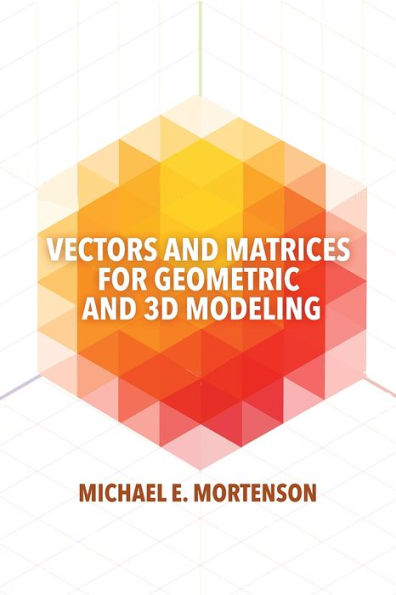This work presents lessons on vectors and matrices in geometric and 3D modeling—the mathematics at the foundation of computer graphics applications. The lessons appear as chapters, generally organized from introductory to more complex topics. Within each chapter, there is a similar order of elementary-to-advanced discussion.
Here are topics that are usually published in briefer form in more advanced texts as part of their supporting mathematics. In this work, vectors and matrices are the main subjects. This text offers an easier-to-understand introduction to the main ideas behind vectors and matrices, stripped of formalism, and leading directly to geometric modeling. It demonstrates the relationships between vectors, matrices, basis vectors and barycentric coordinates, all of which are not usually seen in ordinary texts. This text also discusses how these concepts are applied to produce curves and surfaces, and how they facilitate the analysis of spatial relationships.
For those readers beginning studies in geometric and 3D modeling, animation, CGI, or CAD/CAM, this work serves as an introduction to vectors and matrices, and provides a good start to understanding how they are applied. For instructors, this book can be a primary text or supplement to more advanced or specialized texts on geometric and 3D modeling.
Features
- More than 150 illustrations support visual understanding of the content.
- 100+ exercises and extended solutions enhance the classroom environment.
- A comprehensive range of topics offers an in-depth look at the math underlying 3D modeling and animation courses.
- Linear algebra and calculus are not prerequisites.
This work presents lessons on vectors and matrices in geometric and 3D modeling—the mathematics at the foundation of computer graphics applications. The lessons appear as chapters, generally organized from introductory to more complex topics. Within each chapter, there is a similar order of elementary-to-advanced discussion.
Here are topics that are usually published in briefer form in more advanced texts as part of their supporting mathematics. In this work, vectors and matrices are the main subjects. This text offers an easier-to-understand introduction to the main ideas behind vectors and matrices, stripped of formalism, and leading directly to geometric modeling. It demonstrates the relationships between vectors, matrices, basis vectors and barycentric coordinates, all of which are not usually seen in ordinary texts. This text also discusses how these concepts are applied to produce curves and surfaces, and how they facilitate the analysis of spatial relationships.
For those readers beginning studies in geometric and 3D modeling, animation, CGI, or CAD/CAM, this work serves as an introduction to vectors and matrices, and provides a good start to understanding how they are applied. For instructors, this book can be a primary text or supplement to more advanced or specialized texts on geometric and 3D modeling.
Features
- More than 150 illustrations support visual understanding of the content.
- 100+ exercises and extended solutions enhance the classroom environment.
- A comprehensive range of topics offers an in-depth look at the math underlying 3D modeling and animation courses.
- Linear algebra and calculus are not prerequisites.

Vectors and Matrices for Geometric and 3D Modeling
272
Vectors and Matrices for Geometric and 3D Modeling
272Paperback(First Edition)

Product Details
| ISBN-13: | 9780831136550 |
|---|---|
| Publisher: | Industrial Press, Inc. |
| Publication date: | 10/29/2020 |
| Edition description: | First Edition |
| Pages: | 272 |
| Product dimensions: | 8.50(w) x 11.00(h) x 0.60(d) |
| Age Range: | 18 Years |
